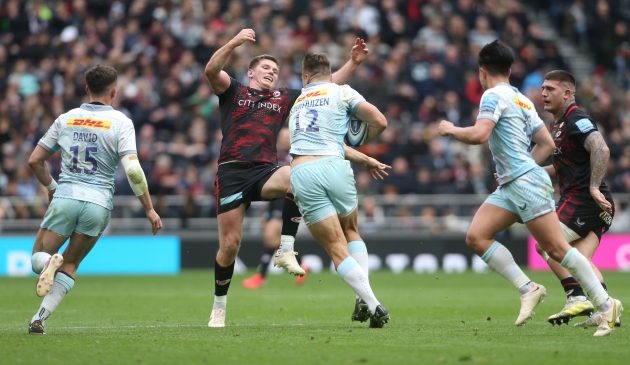Could diving become one of the major talking points of this year's tournament?
Diving is a bit of a faux pas topic in rugby circles but it has slowly reared its ugly head more and more of late and the trend is only going one way.
Rugby has always prided itself on being a game based around respect and honesty. It’s why players address referees formally and almost always accept the word of the officials as final without fuss, even if they disagree.
Related: Our Six Nations: Full Contact review
Similarly, when it comes to diving, which is rife in football, rugby has always held itself to a higher standard.
That’s not to say it has never happened through the years, but when someone has been caught trying to fool those charged with officiating, they have usually found themselves mocked by opposing players and by fans tuning in.
However, rightly or wrongly, or just because that’s the nature of elite-level sport, diving has become more prevalent.
It’s only natural to wonder then if this will be the year of the simulation Six Nations? Could the championship be marred by it?
New laws lead to a new problem: simulation Six Nations
Amid an ongoing and growing legal battle rugby authorities face in regard to a lack of protection of players when it comes to head injuries, stricter laws are now in place.
It’s too late for some, sadly, but on paper it should mitigate the risks for generations to come.
It’s these same rules that have led to what feels like an exponential rise in red cards for reckless or dangerous contact to the head.
We saw one in the World Cup final for the first time when All Blacks captain Sam Cane was sent off in the first half; Tom Curry was shown red just a few minutes into England’s first game against Argentina; Owen Farrell received a controversial sending off in a World Cup warm-up game against Wales; the list goes on.
At club level, there are incidents almost every week where a player is given his marching orders. In what is a hugely physical and fast-paced sport, these things are always going to happen.
However, a byproduct of these stricter laws has been that instances of diving have risen.
‘A slippery slope’
At the highest level, gaining even the slightest edge is often the difference between success and failure, so the opportunity to give your team a numerical advantage is understandably difficult to ignore.
It’s why players will go down now when in the past they would have stayed on their feet. They will call for a medic perhaps when they know they aren’t required in order to alert the officials to the potential of foul play.
And for all the new head injury protocols are a positive and overdue change, the way they are enforced is partly the problem.
Far too often players are allowed to simply run off a knock to the head – sometimes they aren’t even assessed at all – which means they know they can risk making the most of something without sacrificing their place on the pitch.
The impending Six Nations presents the next global platform to assess this growing problem.
It isn’t yet a major issue and instances where players fling themselves to the ground with arms flailing before clutching their face remain the exception, but it’s a slippery slope.
It feels like the solution is simple, too. If a player goes down claiming a head injury they should be immediately taken off for a thorough head injury assessment (HIA).
If not, the fear is that diving in rugby, like it is in football, will simply become an accepted evil of the game, and nobody wants to see that happen.
Download the digital edition of Rugby World straight to your tablet or subscribe to the print edition to get the magazine delivered to your door.





